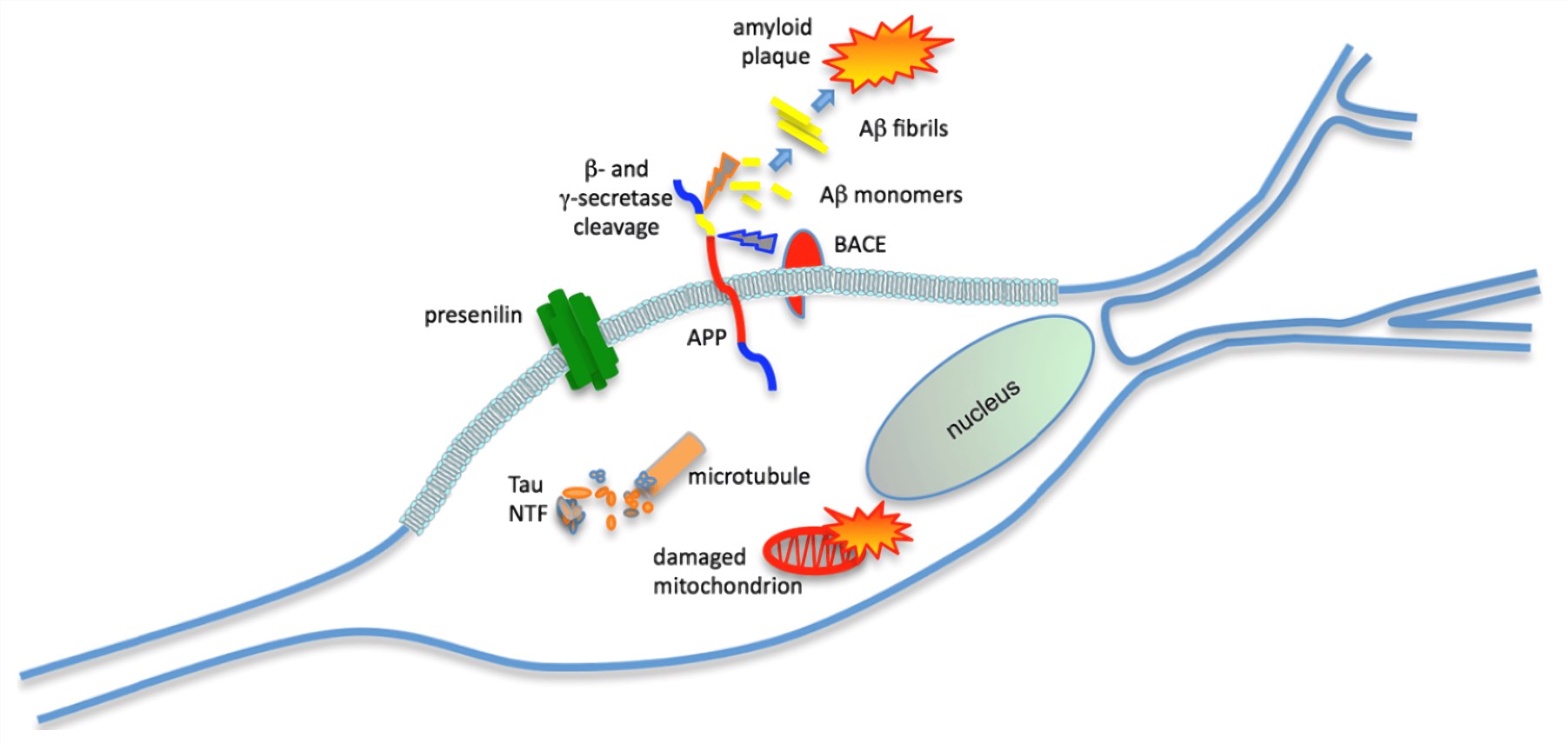Amyloid Beta (Aβ) induced Rodent Alzheimer's Disease Model
Alzheimer's Disease (AD) is one of the leading causes of death for those aged 65 years and older. Because current treatments for AD only offer limited symptomatic alleviation, more effective therapeutic agents are urgently needed. Creative Biolabs offers an amyloid beta-induced AD model and a range of assessment methods for the screening of novel drug candidates for treatments against Alzheimer's and other neurodegenerative diseases.
Introduction of Amyloid Beta (Aβ)-Induced AD Model
AD is a highly devastating neurodegenerative disorder and is characterized by memory impairment and cognitive decline. Studies have revealed that the primary pathology associated with AD is the formation of abnormal metabolic products of Aβ protein. The Aβ aggregates located around neurons not only have a direct toxic effect on the neurons but also enhance the susceptibility of neuronal cells to free radicals, nerve toxins, and other harmful factors, leading to widespread degeneration and the loss of functional neurons, and ultimately memory and cognitive decline.
For induction, rats are anesthetized and positioned on digital stereotaxic apparatus. Hairs are removed and a sagittal incision is made on the scalp. Drill a hole into the skull and rats are infused intracerebroventricularly (I.C.V) with Aβ oligomers, which are small assemblies or aggregations of the so-called Aβ protein. Two weeks are allowed for recovery from surgery and thereafter, different assessments can be performed.
 Fig.1 The two pathological hallmarks of AD are extracellular plaques and intracellular tangles. (Di, 2012)1, 2
Fig.1 The two pathological hallmarks of AD are extracellular plaques and intracellular tangles. (Di, 2012)1, 2
Features of Amyloid Beta (Aβ)-Induced AD Model
- The 'amyloid cascade hypothesis' emphasizes a central role for Aβ in the pathogenesis of AD. Thus, Aβ has become a major therapeutic target, with various anti-Aβ strategies being pursued.
- Aβ proteinosis is an important structure of senile plaques and is thought to be the main reason for the loss of neurons and the resulting memory disability.
- This model has a high mortality rate. Aβ is infused into animal brain stereotaxically, which requires more care after surgery.
Assessments
Creative Biolabs utilizes different behavioral tests of cognitive functions to evaluate the effects of novel compounds on AD in animal models. Blood is collected for biochemical analysis, western blot, and real-time PCR analysis. Brain tissues are isolated for fixation and subsequent histological and immunohistochemical staining (e.g., for quantification of amyloid plaques). Parameters that can be measured include, but are not limited to:
- Behavioral tests (e.g., motor function, cognition, and social behavior)
- Biochemical analysis
- Western blot
- Real-time PCR
- Histological & immunohistochemical analysis
Creative Biolabs also offers other AD models that you may be interested in:
- Streptozotocin (STZ)-Induced Rodent Alzheimer's Disease Model
- Scopolamine-Induced Rodent Amnesia Model
Creative Biolabs offers CRO services with extensive expertise in conducting preclinical efficacy, proof-of-concept, and mechanism of action studies in various animal models of neurological diseases. The comprehensive battery of models available at Creative Biolabs include:
Our team has the skills and experience needed to evaluate your preclinical drug candidates such as small molecules, biologics and RNA therapeutics in acute and chronic efficacy studies. Moreover, having years of experience, Creative Biolabs understands what is needed, how fast it is needed, and how to help design the studies to obtain rapid and clear answers to our clients.
Contact us to discuss your research needs if you are interested in our services.
References
- Di, C. M. Simple model systems: a challenge for Alzheimer's disease[J]. Immunity & Ageing I & A. 2012, 9(1):3.
- under Open Access license CC BY 4.0, without modification.
For Research Use Only.
